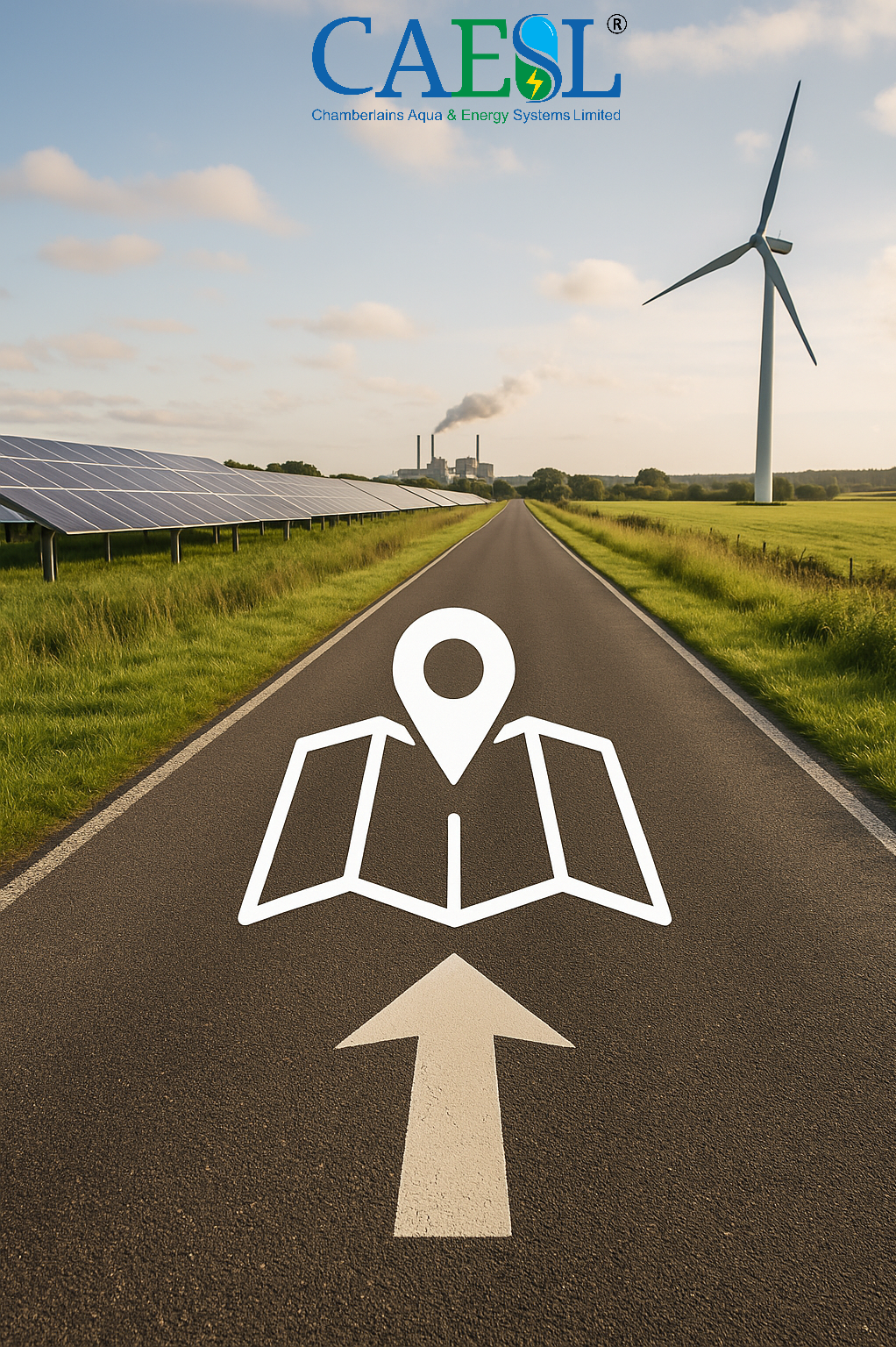As global energy landscapes shift and environmental responsibilities escalate, Holding and Mega companies are increasingly re-evaluating their long-term strategies. Many have adopted the ISO 50000 series—particularly ISO 50001 for Energy Management and ISO 50002 for Energy Auditing—but the true opportunity lies beyond compliance.
In this blog post, we present a strategic roadmap that guides large corporate entities from structured compliance to transformational leadership in sustainability, resilience, and energy performance.
Vision: Embedding Energy Intelligence into Corporate Value
Energy management is no longer a mere operational concern—it is now a driver of innovation, resilience, and long-term sustainability. For progressive organisations, repositioning energy from a cost centre to a strategic asset opens the door to enhanced brand value, stakeholder confidence, and innovation-led growth.
This roadmap sets out a path for Holding and Mega companies to integrate sustainability into corporate governance, operations, and culture—elevating energy intelligence to a core business capability.
Mission: From Compliance to Strategic Value
Once ISO 50000 frameworks are established across a group of companies, the next step is to embed energy strategy into the heart of corporate decision-making. This includes:
-
Viewing energy as a value-creating asset, not just a cost-saving measure
-
Aligning with global ESG disclosure protocols such as the TCFD (Task Force on Climate-related Financial Disclosures), CDP (Carbon Disclosure Project), and GRI (Global Reporting Initiative)
-
Incorporating robust standards like ISO 14064 (GHG accounting) and ISO 14001 (Environmental Management)
Phase 1: Laying the Foundation – Governance and Strategic Alignment
Effective transformation begins with unified governance. Establishing a Group Energy & Sustainability Governance Board ensures coordinated decision-making and alignment with long-term business goals.
Key Deliverables:
-
A group-wide integrated energy and ESG strategy
-
Standardised KPIs for energy, water, and carbon
-
Executive performance linked to sustainability metrics
This foundation provides the structure and accountability necessary for future progress.
Phase 2: Embracing Digital Transformation for Intelligent Energy Management
Digital technologies unlock new levels of energy efficiency. IoT sensors, AI-based analytics, and cloud-based Energy Management Systems (EnMS) provide real-time insights and control.
Highlights:
-
Real-time energy monitoring across all subsidiaries
-
Predictive maintenance using machine learning
-
Centralised data platforms for benchmarking and reporting
By leveraging digital twins and smart procurement tools (e.g., blockchain contracts), organisations can simulate outcomes and optimise investment decisions.
Phase 3: Green Procurement and Climate-Conscious Investment
Sustainable procurement and investment practices are now essential. This includes:
-
Long-term Power Purchase Agreements (PPAs)
-
On-site generation (solar, wind, thermal)
-
Battery and hydrogen storage systems
-
Internal carbon pricing frameworks
Forward Planning:
Scenario testing and climate risk mapping allow organisations to prepare for a range of regulatory and environmental futures. Alignment with standards such as PAS 2080 (for carbon management in infrastructure), ISO 22301 (for business continuity), and ISO 37000 (governance of organisations) will strengthen resilience.
Phase 4: Fostering a Culture of Energy Awareness and Workforce Engagement
Internal alignment is crucial. Companies must embed sustainability into their culture through:
Key Initiatives:
-
Mandatory carbon literacy training for executives and staff
-
A Sustainability Academy for continuous learning
-
Incentives linked to employee-led innovation and circularity
Engaging employees fosters a shared sense of purpose and drives continuous improvement.
Phase 5: Future-Proofing Through Climate Resilience
Proactive climate resilience is critical for long-term success.
Deliverables:
-
A 2050 climate resilience strategy with adaptive scenarios
-
TCFD-aligned disclosures
-
Investment in nature-based solutions and carbon removal technologies
By preparing for climate uncertainty, companies can safeguard operations and uphold stakeholder trust.
Phase 6: Ongoing Monitoring, Certification, and Transparency
Continuous improvement must be verified and communicated. Regular audits and certification against ISO 50001 (Energy Management), ISO 14001 (Environmental Management), and ISO 14064 (GHG Emissions) validate performance.
Transparency Tools:
Participation in CDP, GRI, and other global disclosure platforms reinforces credibility and supports investor relations.
Conclusion: Leading the Transition to Sustainable Business
By adopting this strategic roadmap, Holding and Mega companies can lead the transition from energy compliance to sustainable excellence. Integrating energy strategy into governance, investment, operations, and culture provides a robust foundation for innovation, resilience, and financial performance.
This roadmap is not just about addressing today’s energy challenges—it is about shaping a future where sustainability is central to business success.
Interested in implementing this roadmap?
Contact us at services@caesl.co.uk to explore how CAESL can support your organisation’s sustainable transformation journey.





